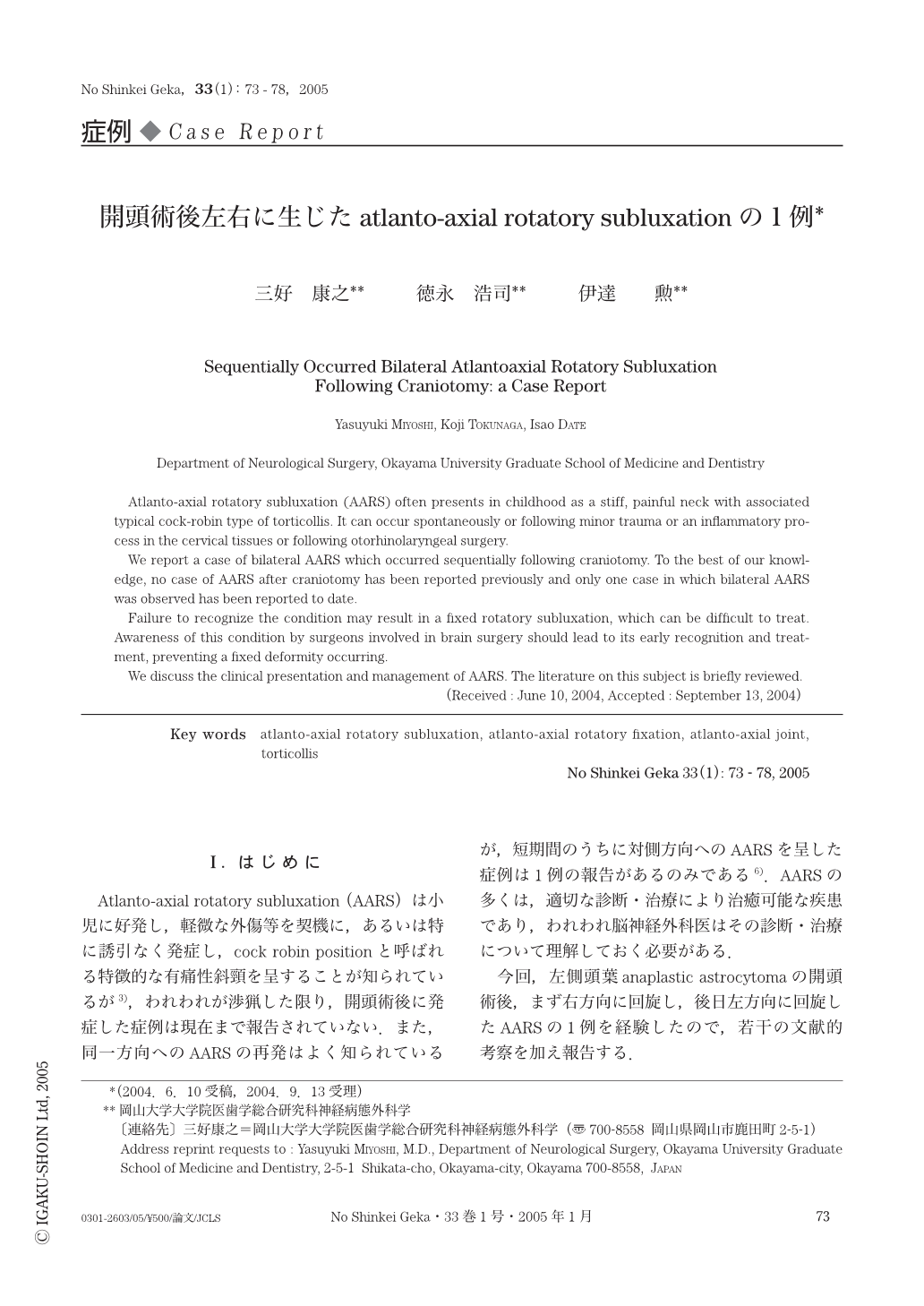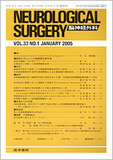Japanese
English
- 有料閲覧
- Abstract 文献概要
- 1ページ目 Look Inside
- 参考文献 Reference
Ⅰ.はじめに
Atlanto-axial rotatory subluxation (AARS)は小児に好発し,軽微な外傷等を契機に,あるいは特に誘引なく発症し,cock robin positionと呼ばれる特徴的な有痛性斜頸を呈することが知られているが3),われわれが渉猟した限り,開頭術後に発症した症例は現在まで報告されていない.また,同一方向へのAARSの再発はよく知られているが,短期間のうちに対側方向へのAARSを呈した症例は1例の報告があるのみである6).AARSの多くは,適切な診断・治療により治癒可能な疾患であり,われわれ脳神経外科医はその診断・治療について理解しておく必要がある.
今回,左側頭葉anaplastic astrocytomaの開頭術後,まず右方向に回旋し,後日左方向に回旋したAARSの1例を経験したので,若干の文献的考察を加え報告する.
Atlanto-axial rotatory subluxation (AARS) often presents in childhood as a stiff, painful neck with associated typical cock-robin type of torticollis. It can occur spontaneously or following minor trauma or an inflammatory process in the cervical tissues or following otorhinolaryngeal surgery.
We report a case of bilateral AARS which occurred sequentially following craniotomy. To the best of our knowledge,no case of AARS after craniotomy has been reported previously and only one case in which bilateral AARS was observed has been reported to date.
Failure to recognize the condition may result in a fixed rotatory subluxation, which can be difficult to treat. Awareness of this condition by surgeons involved in brain surgery should lead to its early recognition and treatment, preventing a fixed deformity occurring.
We discuss the clinical presentation and management of AARS. The literature on this subject is briefly reviewed.

Copyright © 2005, Igaku-Shoin Ltd. All rights reserved.


